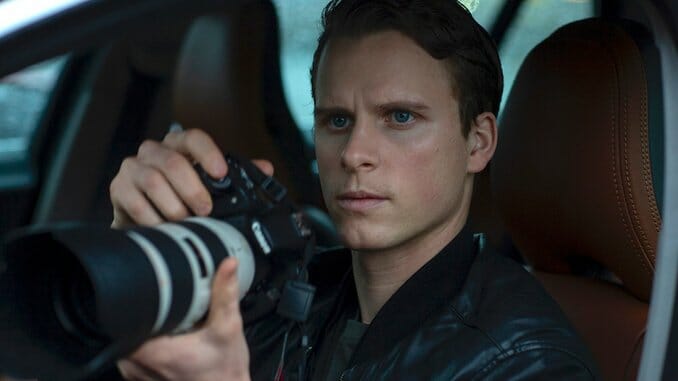The Sorrows of Netflix’s Young Wallander
This is not the Swedish Noir you're looking for.
Photo Courtesy of Netflix
The first thing you notice about the new Netflix series Young Wallander is the glaring identity crisis. The original Kurt Wallander, as depicted in the popular novels of Henning Mankell, is a gloomy Swedish police inspector in the coastal town of Ystad, brilliant but beset by depression, anger, alcoholism, various family disasters, and, just for good measure, diabetes and Alzheimer’s. The books were first adapted as a series of movies in Sweden, then as a Swedish TV show, and in 2008 the character gained a larger foothold in the U.K. and eventually America with the excellent BBC adaptation starring the rumpled, melancholic Kenneth Brannagh. In that show, the creators made the choice to keep the original Ystad setting (and filmed most of the show in Ystad itself, sometimes overlapping with the ongoing Swedish series), but wisely let all the actors use their normal British accents. Comparatively, Young Wallander is a bit of a strange fish. It’s still the same character, still set in Sweden (in Malmo, the closest big city to Ystad), but it’s shot in Lithuania. Most of the cast are British, and speak with British accents, but there’s one very jarring exception in Young Wallander himself, played by Adam Palsson: a Swedish actor speaking English with a Swedish accent.
If that sounds confusing, it is. As a conceit, it’s also a legitimate hurdle for the viewer, because it continues to sound discordant even after you accept the choice. A very generous interpretation might paint it as an attempt to highlight Wallander’s otherness, or his isolation, but amidst a plot that focuses on topics like immigration and race and poverty—real outsider status, in other words—it just feels clunky when the main white guy sounds different from the other white guys for no good reason. For consistency’s sake, it would have made far more sense for Netflix to stick with a Brit, or to go full Swedish.
While attempting to reconcile this, I wondered if the creators had fetishized the concept of Scandinavian Noir to such a degree that they thought at least one Swedish voice was needed for authenticity. But in fact, there are very few conventions of that genre otherwise on display. Since it’s filmed in Lithuania, we’re mostly dealing here with a sort of Baltic Gotham, forever shadowy, complete with blocky housing projects that retain something of the drab Soviet-era numbness from which they undoubtedly originate. There are no sweeping seaside vistas, no fjords, no fields of wheat, no barren snowy landscapes interrupted only by a lonely white birch. It’s just a grim city; nobody felt beholden to a Nordic vision. There are smaller confusions, too. If Kurt Wallander was an aging police inspector in the ‘90s, then a “young” Wallander would come of age in the ‘70s and ‘80s. Instead, they immediately chuck the prequel concept by staging the story in the present.
In other words, they’ve used the idea of Wallander, but made him younger, transported him to a city, transported him to the present day, jettisoned the Nordic Noir elements, and retained very few of the biographical details present in the novels or other TV adaptations. (There is one scene in which his boss plays opera on a car ride, but when Wallander—who, in the books, loves opera—is asked what he thinks, he’ll only say “I keep an open mind.” As far as nods to the original go, it’s thin gruel.)
So why not just make a new show? Within about ten minutes of the pilot, I began to suspect that the concept of “Wallander” was only there to build a bridge to a well-known, successful detective franchise, but that was otherwise unrelated. Which was a red flag, signaling that the material wasn’t strong enough on its own without grasping desperately for a familiar lifeline. With only a flimsy, confusing connection to the source material, it put huge pressure on the show’s other elements to carry the water.